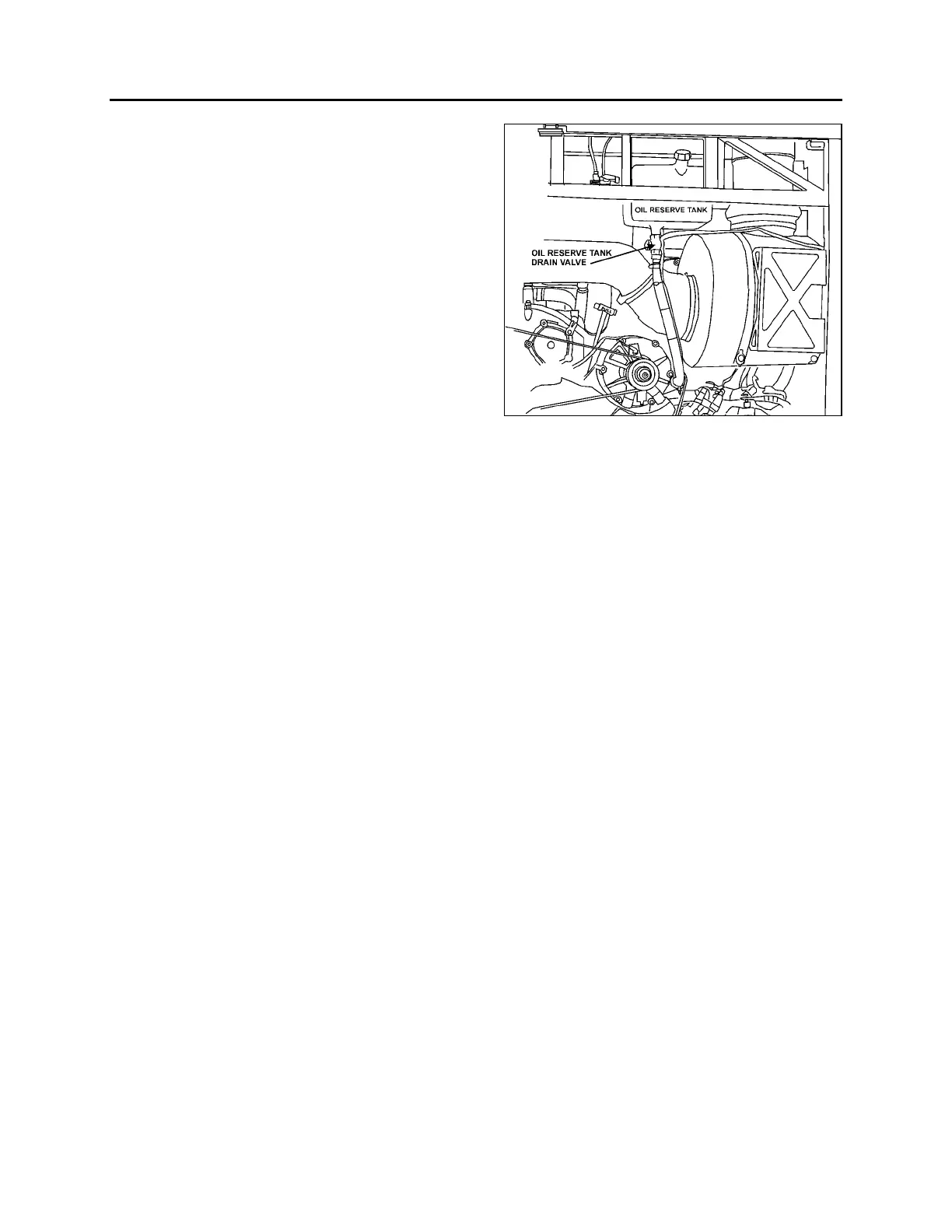Section 24: LUBRICATION
PA1553
3
2.1 ENGINE OIL CHANGE INTERVALS
The engine oil change intervals are related to
the operating conditions, such as vehicle load,
speed, etc., and may vary. It is recommended
however, that the oil change be performed after
every 12,500 miles (20 000 km).
The drain intervals may then be gradually
increased or decreased with experience on a
specific lubricant, considering the
recommendations of the oil supplier (analysis of
drained oil can be helpful), until the most
practical service condition has been established.
Solvents should not be used as flushing oils.
Dilution of the fresh refill oil supply can occur,
which may be detrimental for the engine.
Engine oil temperature should be checked every
25,000 miles (40 000 km) to determine oil cooler
efficiency. This check should be made by
inserting a steel jacketed thermometer in the
dipstick opening, immediately after stopping a
hot, loaded engine. If the oil temperature
exceeds the coolant temperature by more than
60 °F (33 °C), the oil cooler may be clogged.
For detailed oil specifications, refer to "Detroit
Diesel Series 60 Service Manual" under heading
"Lubricating Oil for Detroit Diesel Engines".
2.1.1 Engine Oil Reserve Tank
An oil reserve tank with a capacity of 8.4 US
quarts (8,0 liters) (optional) is connected to the
crankcase by a hose with a shutoff valve,
allowing oil to be added to crankcase by
opening valve. Comparison of oil levels in sight
gauge, before and after adding oil to crankcase,
shows approximately how much oil has been
added.
Filling of this tank can be made by opening the
rear engine doors. The tank is mounted on R.H.
side of engine compartment, over the A/C
compressor.
FIGURE 1: ENGINE OIL RESERVE TANK 01172
2.2 COLD WEATHER OPERATION
The proper selection of the engine oil grade will
ease cold weather starting (refer to the
lubrication and servicing schedule for the engine
oil grade recommendation). Other practical
considerations, such as the use of batteries,
cables and connectors of adequate size, proper
setting of voltage regulator, ether starting aid, oil
and coolant heater systems, and proper fuel
selection will ease cold weather starting.
2.3 FLEXIBLE HOSE MAINTENANCE
The performance of engine and equipment are
greatly related to the ability of flexible hoses to
supply lubricating oil, air, coolant, and fuel oil.
Maintenance of hoses is an important step to
ensure efficient, economical, and safe operation
of the engine and related equipment.
2.3.1 Pre-Starting Inspection
Check hoses daily as part of the pre-starting
inspection. Examine hose for leaks, and check
all fittings, clamps, and ties carefully. Ensure
that hoses are not resting on or touching shafts,
couplings, heated surfaces including exhaust
manifolds, any sharp edges, or other obviously
damaging areas. Since all machinery vibrates
and moves to a certain extent, clamps and ties
can fatigue with time. To ensure proper support,
inspect fasteners frequently and tighten or
replace them as necessary.

